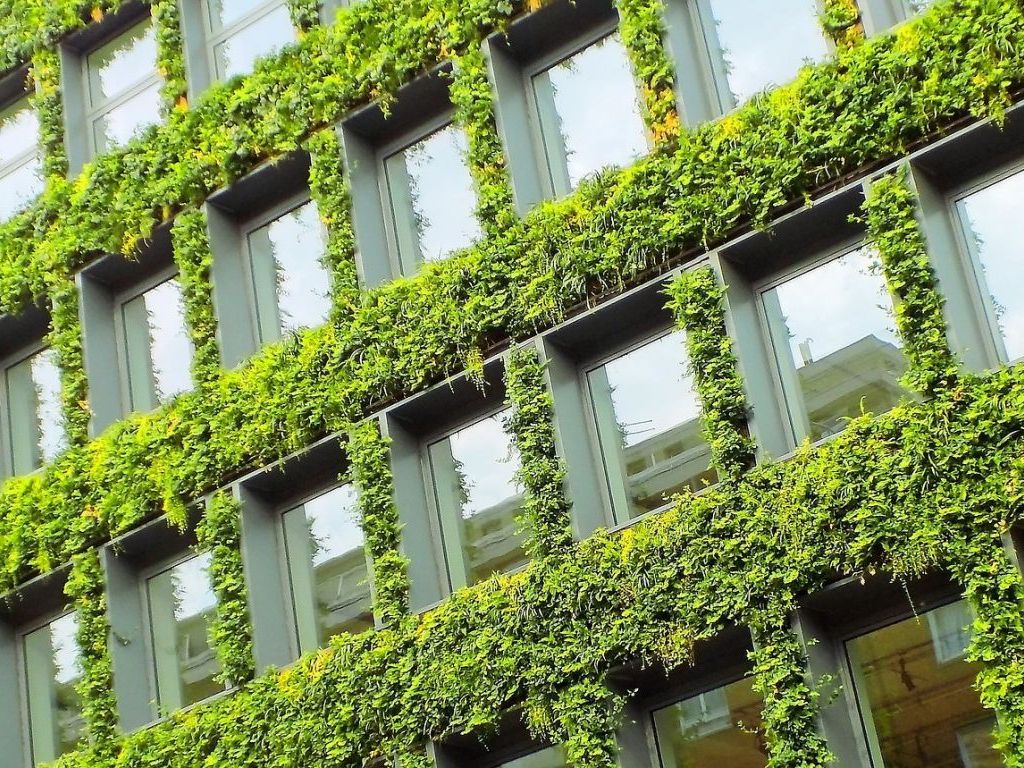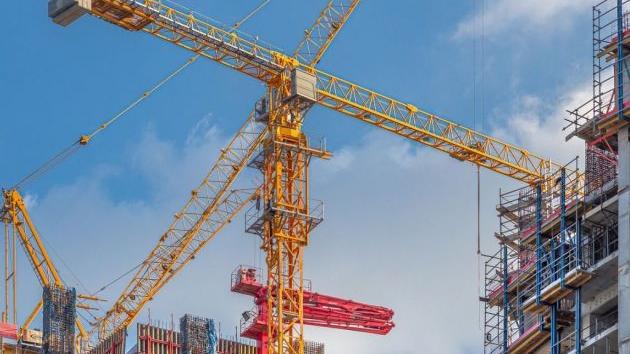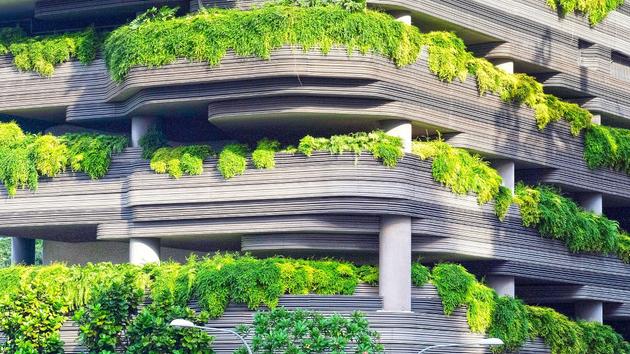Dragana Korica, executive director of the Serbian Green Building Council - There are no resources, the construction industry must become more sustainable
 Friday, 29.03.2024.
Friday, 29.03.2024.
 12:36
12:36

And Serbia follows world trends. The first building certified as green in Serbia was registered in 2013, and today we have more than 130 buildings that have leading international green building certification systems or are in the process of obtaining them, Dragana Korica from the Green Building Council of Serbia reveals in an interview for eKapija.
According to her, the market has only recognized the benefits of green construction, which enables cleaner and healthier air, lower electricity and heating bills, more sustainable consumption and better and more beautiful spaces. Those who do not get involved in circularity in time will eventually pay dearly for the price of natural resources, our interlocutor warns.
How realistic is it for the construction sector to be decarbonized by 2050, which is set as a goal?
- It all depends on which market is being observed. Europe has set itself that goal, as well as the conditioning of the parameters in order to achieve it. It is important to note that in Europe, deep renovation is key to success in this field, due to the volume of the existing building stock. In our market, there are incentives for energy efficiency and green certification of new buildings that already follow the regulation, but deep renovation is not currently covered, although it should perhaps be a priority. The regulations will certainly be more and more demanding, taking into account the policy of pre-accession harmonization - for example, in our regulations there is a requirement to move to the next energy class during a deep renovation, while in Europe for the same case there is a condition that the building becomes an almost zero energy building - the so-called . NZEB, i.e. Nearly Zero Energy Building.
Green buildings will represent an investment opportunity worth 24.7 trillion dollars by 2030, according to the calculations of the World Green Building Council, of which you are a member. On the other hand, there is a belief that green construction is more expensive than traditional construction. Is it really like that?
- Green construction is a higher investment cost at the start, indisputably. However, one of the key principles of green construction is to look at the building through its entire life cycle, because during the life cycle-use - green construction brings great benefits that make the initially larger investment worthwhile. A perfect example of this is Deloitte`s "Edge" building in Amsterdam. It was the most expensive in the investment phase, but that is why it is now the cheapest to maintain, with increased comfort, health and other positive effects on employees and their work. Because of all this, those who remain in ownership of such spaces and opt for green construction, which the market in our country confirms.
What elements of sustainable construction are the easiest and cheapest to apply?
- When we talk about green building, we are actually talking about a holistic approach that includes various aspects: energy efficiency, emission reduction, saving natural resources, circularity, care for health, well-being and biodiversity as an inseparable element of common survival. The ease of application depends on the ability and willingness of the investor to implement green building solutions. Undeniably, it is always easier and better to introduce green construction as early as possible - ideally, from the very beginning of the design process, and further development throughout the entire life cycle of the building. The sooner green construction enters the equation, the wider the possibilities, and the greater the benefits of its introduction. We all say that health is priceless, but the question is how much we are ready to invest for health.
How does the energy crisis affect green construction??
- Perhaps it would be better to ask whether green construction has an impact on the energy crisis. If we look at it from the previously mentioned holistic point of view, then it includes the presence of renewable energy sources, either at the location itself - on the building, or by remote power supply from renewable sources (eg geothermal pumps, solar panels, photovoltaic panels on the facade, etc.). All of them can have a significant contribution in amortizing the effect of the energy crisis. Renewable sources bring self-sustainability and increase the independence of their users from the wider energy grid and the energy crisis. At the same time, reduced network load is good for all other users who depend on it.

The first building certified as green in Serbia was registered in 2013. How many are there today? Is the interest of investors in this type of construction satisfactory?
- It is important to note that there are different certificates, which are not all equally recognized or widespread. If we look at leading international certification systems such as LEED, BREEAM and the like, we can say that today we have more than 130 buildings that are in the process or have these certificates, which is a big jump in just 10 years. Interest is constantly growing, although until recently there was no regulation or incentive. This means that the market just recognized the benefits of green construction and adopted it organically. With the new regulation, it is expected that the certification trend will continue to grow, because the transformation of the sector and the built environment is inevitable. We also expect that the share of commercial, business and industrial buildings that currently dominate the statistics will decrease in favor of others, especially residential ones, given that residential building makes up the largest percentage of newly built buildings in Serbia.
Amendments to the Law on Planning and Construction introduce a green building certificate for all public facilities, as well as for all facilities over 10,000 square meters, energy passports are introduced, and the investor is obliged to submit evidence of the movement of construction waste before obtaining a use permit. To what extent do these and similar legal provisions encourage sustainability in the industry?
- They are very encouraging, the question is what would happen without them - we would be even further away and depend completely on organic growth. Such steps send a clear signal that the construction industry must also undergo inevitable changes in the direction of sustainability. Materials and products must be more efficient, environmentally friendly, at least with a percentage of recycled content. The sooner we accept this, the safer it is to survive on the market, because there are simply no resources, and the regulatory framework will be more and more demanding. Europe is working hard to optimize the use of natural resources, so those who do not engage in circularity in time will someday pay dearly the price of natural resources - maybe not tomorrow, but the survival of such a business will be questionable.
What are the necessary prerequisites for increasing green building in Serbia? Is it necessary to stimulate investors with subsidies or adopt the obligation to use ecological/recycled materials?
- Apart from the systemic support for green building that is already present, it is necessary to raise general awareness and knowledge on this topic. The new Law on Planning and Construction foresees not only the obligation for certification for buildings over 10,000 square meters, but also financial incentives for all newly built buildings that confirm the voluntary application of green construction with a certificate, regardless of square footage. The next step, as mentioned, would be to turn this systemic support to the deep renovation of the existing building fund. Then we will really be on the right track to achieve both resource optimization and reduction of harmful gas emissions, with significant benefits for all of us.

How far are we from the European Union`s recommendation to recycle 70% of construction waste?
- At this moment, it may seem that we are far away, but the significant step that our regulation has taken by conditioning the monitoring of the flow of construction and demolition waste is important, and there is an obligation to look at the entire path of construction waste. It is necessary to raise awareness about primary selection: that there are materials that can be recycled and reused instead of everything ending up in the waste. Given that concrete is one of the largest components of building waste, with a tendency to increase, the Council, in cooperation with the Serbian Chamber of Commerce (PKS) and the Ministry of Economy, worked on reviewing its treatment and recyclability through our publication Roadmap for the reuse, recycling or valorization of construction concrete of waste and an analysis of the current situation in the area of concrete waste management, which is available on our website. It contains a set of recommendations, and other materials should be approached similarly. Redirecting recyclable materials from waste has the potential to create new jobs and markets, and one of the postulates of green building is the optimization of natural resources by introducing the principle of circularity into this sector.
Why is Green Building Important? How does it affect us, our health, productivity?
- Green building is important because through the improvement of the built environment that surrounds us every day, it has the potential to influence the improvement of absolutely every aspect of our lives. Green building has direct economic, social and ecological effects - it makes our environment healthier for us and for the planet, more beautiful, more profitable, cheaper, and more comfortable for living and working, which has been proven to improve productivity significantly. Green building means cleaner, healthier air, lower electricity and heating bills, more sustainable consumption and better and more beautiful spaces - for everyone.
M. Dedić

Click here to see the entire Special Edition Newsletter
"Green (r)evolution - The future has begun"
 Savet zelene gradnje Srbije
Savet zelene gradnje Srbije


 Izdanje Srbija
Izdanje Srbija Serbische Ausgabe
Serbische Ausgabe Izdanje BiH
Izdanje BiH Izdanje Crna Gora
Izdanje Crna Gora


 News
News








